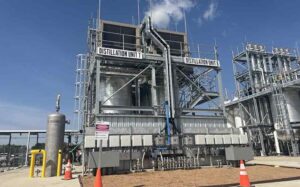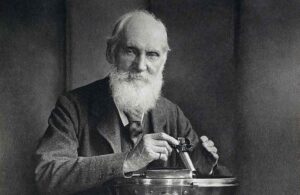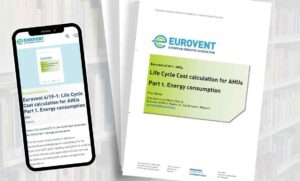VRF technology rocks the US
19th August 2015 USA: The US government is increasingly issuing waivers to its “Buy American” policy as public facilities seek the energy saving advantages of VRF air conditioning technology.
USA: The US government is increasingly issuing waivers to its “Buy American” policy as public facilities seek the energy saving advantages of VRF air conditioning technology.
Last week, the Federal Transit Administration granted a request from Kansas City to install a non-American VRF system at the vehicle maintenance facility for its Downtown Streetcar Project, currently under construction in the city.
The Buy American Act requires the United States government to buy US-made products. In certain circumstances, the requirement may be waived if the domestic product is more expensive than an identical foreign-sourced product by a certain percentage, if the product is not available domestically or in sufficient quantity or quality.
VRF systems were first introduced by Japanese manufacturers in the 1980s. The technology has since been adopted as the most common commercial air conditioning system in the rest of the world – except the US. While traditional ducted systems remain the predominant heating and cooling system of choice in the US, VRF is expected to gain an increasing foothold, largely due to its better energy efficiency. Tests are said to have shown a 34% energy advantage over ducted systems.
Although still small, sales of VRF systems are currently increasing by over 20% per year, and the tightening of US energy regulations is expected to have an increasing effect.
Blanket waiver
In 2010, the US Department of Energy issued a blanket non-availability waiver for VRF systems procured with American Reinvestment and Recovery Act funding. Last year, the Federal Transit Administration, itself, issued non-availability waivers, allowing San Bernardino Associated Governments and Rock Island County Metropolitan Mass Transit District to install VRF systems on building projects. In both cases, the project leaders maintained that only a VRF system would enable them to meet the US Green Building Council’s Leadership in Energy and Environmental Design (LEED) requirements.
 The latest waiver is also energy efficiency related. Kansas City’s vehicle maintenance facility is also being built to LEED standards and will incorporate a number of sustainable and energy efficient elements. Kansas stated that one of those elements is a VRF hvac system, which it said was, among other things, “space saving, has inverter technology, efficiency, and a non-ozone depleting refrigerant that domestic manufacturers of hvac systems do not provide”.
The latest waiver is also energy efficiency related. Kansas City’s vehicle maintenance facility is also being built to LEED standards and will incorporate a number of sustainable and energy efficient elements. Kansas stated that one of those elements is a VRF hvac system, which it said was, among other things, “space saving, has inverter technology, efficiency, and a non-ozone depleting refrigerant that domestic manufacturers of hvac systems do not provide”.
According to Kansas City, its contractor was directed to evaluate the substitution of a Buy America-compliant VAV system, but the contractor advised that the VAV system would endanger the project’s LEED Gold certification because of the difference in efficiency between the VAV and VRF hvac systems. In addition, the substitution of a VAV system would require significant changes to the project, such as the alteration of already-erected structural elements that were designed to accommodate a VRF system and additional design changes and plan reviews by the City of Kansas City.
In February this year, the Federal Transit Administration carried out its own investigations, engaging National Institute of Standards and Technology’s Hollings Manufacturing Extension Partnership (NIST-MEP) to scout for Buy America-compliant VRF systems. NIST-MEP did not locate any domestic VRF systems. In fact, Carrier Corporation responded to NIST-MEP’s scouting efforts, stating “VRF system is a new technology … there are no current domestic manufacturers of VRF systems.”
In applying for a waiver last year for its MetroLINK Transfer Station, Rock Island County argued that VRF air conditioning was critical in obtaining the LEED points necessary to achieve the Silver certification (or better) that it was seeking. Its application said: “MetroLINK specified the brands “Daikin AC” and “Mitsubishi,” or approved equal, but MetroLINK has been unable to identify a domestic manufacturer of the VRF hvac system that meets its specifications.”

Major investments
It is the likes of Daikin and Mitsubishi, along with Johnson Controls and its recent tie-up with Hitachi, who are expected to lead the way in the US.
Earlier this year, Daikin announced its intention to build a new $410m, 350,000m² factory in Houston as part of plans for a major medium- to long-term expansion in the US. Significantly, it is also to be used to increase production and sales of VRF technology.
Daikin’s acquisition of US manufacturer Goodman in 2012 provided Daikin with immediate sales access to more than 60% of contractors and dealers in the US.
Access to Hitachi’s VRF product range was thought to be the main driving force behind Johnson Control’s purchase of a 60% stake in Hitachi’s global air conditioning business at the end of 2013. At the time, Johnson’s chairman, president and ceo Alex Molinaroli, referring to VRF, remarked: “It’s a very important technology and it’s the future of air conditioning. And it’s going to have a major place in the United States market so we needed that technology. For us to build that organically, it was too risky and it would have taken too much time to continue within that marketplace. The technology first was really important.”
Last month, Johnson Controls unveiled a new 12,600ft² training facility in Dallas, Texas, specifically focused on VRF air conditioning.
© 2015 Cooling Post. Not to be reproduced without prior permission. All rights reserved
Related stories:
Johnson Controls opens VRF training centre – July 16, 2015
USA: Johnson Controls has unveiled a new training facility in Dallas, Texas, focused on VRF air conditioning. Read more…
Daikin breaks ground on $417m US facility – March 27, 2015
USA: Daikin has broken ground on its new $417m, 350,000m² production facility near Houston. Read more…
Johnson/Hitachi ac deal signed – January 22, 2015
USA and JAPAN: Johnson Controls has finally signed the deal which sees it taking a 60% stake in Hitachi’s air conditioning business. Read more…
Daikin plans $410m US factory – January 7, 2015
USA: Daikin is to build a new 350,000m² factory in Houston as part of plans for a major medium- to long-term expansion of its US market. Read more…
VRF the key in Johnson/Hitachi deal – March 4, 2014
USA: The head of Johnson Controls has revealed that Hitachi’s VRF was a major reason behind its 60% stake in the company’s global air conditioning business. Read more…







